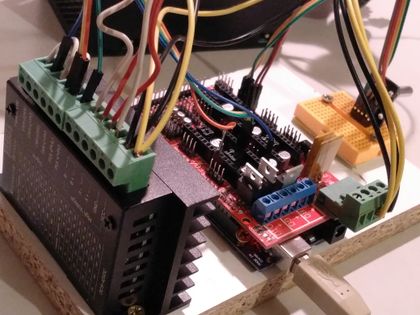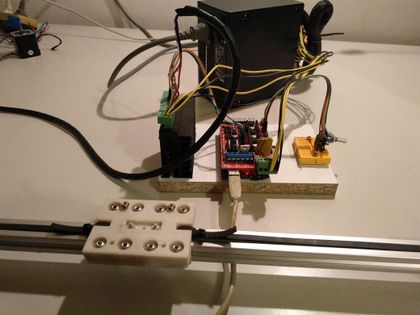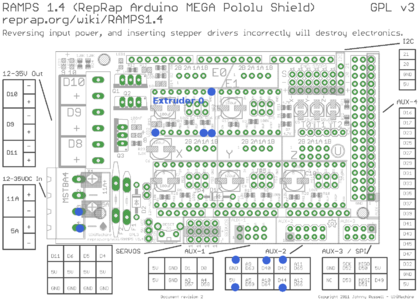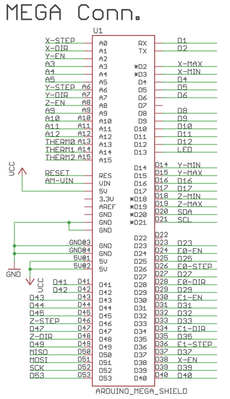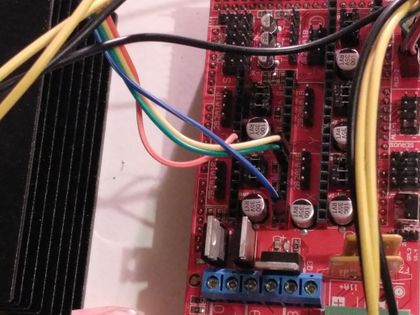CNC Torch Table Z Height Control: Difference between revisions
No edit summary |
No edit summary |
||
| Line 36: | Line 36: | ||
Os manthc ramps-wiring1.png | Ramps-pins to connect are marked with a blue point | Os manthc ramps-wiring1.png | Ramps-pins to connect are marked with a blue point | ||
Os_manthc_ramps2mega.png | Mapping of the Ramps-Pins onto the Arduino-Mega ports | Os_manthc_ramps2mega.png | Mapping of the Ramps-Pins onto the Arduino-Mega ports | ||
Os_manthc_ramps-wiring2.jpg | The pins at the extruder E0 port are connected to the TB6600 | |||
Os_manthc_ramps-wiring3.jpg | The pins at the AUX2 port are conected to the rotary encoder | |||
</gallery> | </gallery> | ||
Revision as of 23:56, 24 June 2017
Manual adjustable version of CNC Torch Table Height Controller
This is a simple POC-version that allows a manual adjustment of the Z height by turning a jog wheel. The wheel can be 3d-printed [1] and is connected to a rotary encoder of type KY-040.
- manually steered height control
- demonstration video on youtube: [2]
Design Rationale
With this rig it should be possible to manually operate the torch table height by following its slowly moving and regulate the height personally. This can be useful even if in the full version there is a capacitive sensor is doing automatically that task, but one may use it then for setting the starting height or use it in other applications where a frequent manual control is an appreciated option.
The rotary encoder gives up to 20 pulses per revolution to an Arduino-Mega, which translates it into a number of motor steps and triggers these by a TB6600-based stepper-driver. A RAMPS 1.4 may act as a connection layer on top of the Arduino, but can also be omitted. We will show here which pins to wire on the Arduino and on the Ramps as well.
The firmware consist only of a few lines of Arduino-code, which makes it easy to extend and modify.
BOM
Wiring

